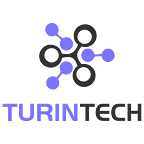Top 5 AI Use Cases for Quantitative Trading — TurinTech AI
Artificial intelligence (AI) has transformed the finance industry in recent years. One area where AI has made a significant impact is quantitative trading, where algorithms are used to analyse large amounts of financial data and make trades based on patterns and trends. While statistical methods have been used for many years in finance to analyse data, the complexity and volume of financial data have made it necessary to incorporate AI methods, which can provide more nuanced insights and help to better understand the data. In this article, we will discuss the top five AI use cases in quantitative trading that can impact ROI and increase productivity.
Financial Sentiment Analysis
PRE-TRADE
Generative AI has significantly improved businesses’ ability to understand and analyse text data, including news and social media sentiment. Using advanced transformer models like GPT-3, AI-powered sentiment analysis has become more accurate and efficient, enabling traders to make better-informed decisions based on real-time data.
Suppose a trading team wants to make trades based on news and social media sentiment. The team can use AI-powered sentiment analysis to analyse news articles, social media posts, and other relevant content to determine whether sentiment is positive or negative. For example, if the sentiment around a particular company is positive, the trading team may decide to buy stock in that company. On the other hand, if sentiment is negative, the team may decide to sell their holdings. By leveraging AI-powered sentiment analysis, the trading team can make more informed trading decisions based on real-time data.
Trading Pattern Recognition
PRE-TRADE
Automated trading involves using AI algorithms to make trades automatically based on certain patterns or rules. For example, suppose a trading team wants to make trades based on a stock’s price movements between 9:30 a.m. and 10:00 a.m. every day. The team can use AI-powered pattern recognition to identify this pattern and execute trades automatically during that time period. By automating their trading strategies, the team can save time and increase their efficiency. See a detailed example of how our platform evoML uses AI to predict Dow Jones prices and trends automatically:
Time Series Forecasting: Predicting Dow Jones Prices and Trends with evoML — TurinTech AI .
Accelerate Algorithmic Trading
TRADE EXECUTION
High-frequency trading involves making trades at extremely high speeds to take advantage of small price movements. AI-powered algorithms can analyse vast amounts of data and execute trades faster than human traders. For example, an algorithm can analyse data on a stock’s price movements and execute trades based on certain patterns or trends. By using AI-powered algorithms, the trading team can make more trades in a shorter amount of time and increase their profits.
Detect Market Anomalies
POST TRADE
Trading teams are facing challenges with the daily securities pricing reconciliation, where a majority of the exceptions were not true anomalies but needed to be reviewed. The trading team can use AI-powered algorithms to quickly build ML models leveraging historical data spanning several years. AI can track the movement of a particular stock against other securities and raises a flag for an analyst to review whenever an anomaly is detected. This allows trading teams to reduce exceptions while eliminating the need for manual effort improving efficiency and accuracy.
Risk Management
ACROSS TRADING CYCLE
One of the primary challenges in trading is managing risk. AI-powered predictive modelling can help traders identify potential risks and assess the likelihood of events occurring. Let’s say a quantitative trading team invested in the energy sector and wants to predict the risk of a future oil price drop. The team can use AI-powered predictive modelling to analyse historical data on oil prices, supply, and demand. The AI algorithm can identify patterns and trends in the data and use them to predict the likelihood of a future drop in oil prices. Based on this prediction, the trading team can adjust their portfolio to reduce their exposure to the energy sector or invest in other sectors to hedge against potential losses.
Why Should You Care?
Each of these use cases can impact ROI by reducing the likelihood of losses, increasing the number of profitable trades, and maximising returns while minimising risk. In addition, using AI in quantitative trading can be cost-saving and increase productivity by automating trading strategies, executing trades faster and more efficiently, and managing assets more efficiently. By leveraging AI-powered tools, trading teams can make more informed trading decisions and achieve higher ROI with greater accuracy and efficiency.
Elevate Your Company’s Capabilities with evoML
At Turintech we have built evoML, a model code generation and optimisation platform that can help quant traders address the use cases mentioned above, and a lot more. With evoML, traders can upload their data and automatically generate high-performing ML model code in a fraction of the time it would take to develop the code manually. The platform provides a transparent and explainable workflow that traders can trust, ensuring that the models generated are accurate and reliable. Moreover, evoML is currently used by leading banks and hedge funds, who appreciate the platform’s ability to generate the full code of a machine-learning model, optimised for speed. The code can also be downloaded for further customisation. By leveraging evoML, quant traders can accelerate their data science lifecycle, reduce costs, and increase productivity, allowing them to make better-informed trading decisions and ultimately achieve higher ROI.
Originally published at https://www.turintech.ai on March 23, 2023.
